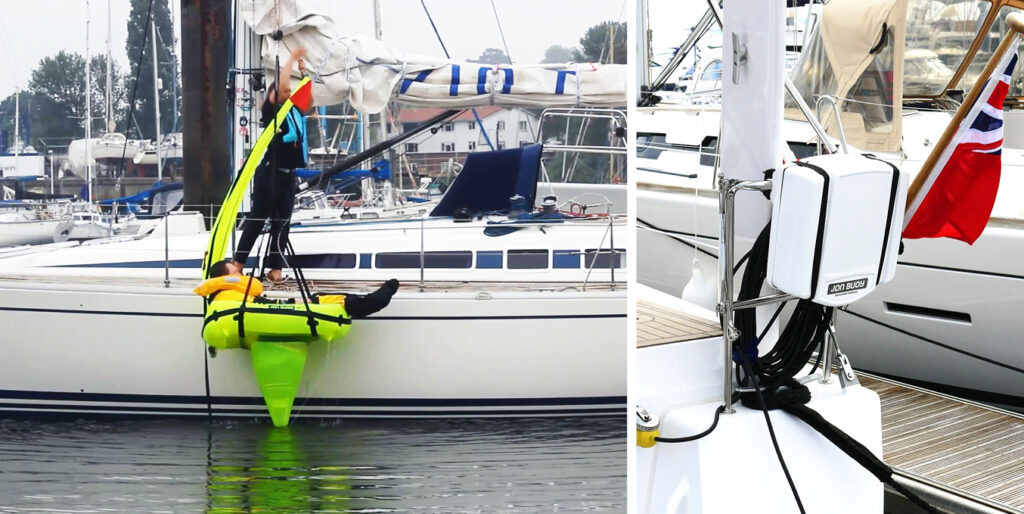Falling overboard is something that some of us have experienced but everyone takes care to avoid. The danger of being in the water for all but the shortest time greatly increases the risks of fatality or at least hypothermia and water ingestion.
Being able to retrieve a person from the water as quickly as possible is absolutely paramount. An inshore racing yacht whose crew member slips overboard during a busy manoeuvre might have plenty of manpower with a team of strong sailors to swiftly haul them back on board in relatively calm waters and in daylight, but consider a cruising boat out of sight of land with just two people on board, which is quite the norm. Worse still it could be the stronger, heavier and more experienced of the two that has fallen overboard.
There are ways to make retrieving a person from the water as easy as possible so boat owners should make sure they keep a selection of essential equipment on board. One of the most recognisable MOB recovery systems is the Ocean Safety Jonbuoy Recovery Module, which most people recognise as a neat slim – and unused – canister mounted on the transom. Once launched, however the Jonbuoy inside deploys into a high visibility float which the casualty can rest on, and which can be winched via a halyard back on board. This is particularly helpful if the casualty is injured. Other floatation aids which can be thrown to a person in the water include a horseshoe lifebuoy or automatically inflating Jonbuoy version. These won’t necessarily have a means of getting the crew back on the boat so it’s vital to carry a boarding ladder – these can be stowed away when not in use.
It goes without saying that you should be wearing a lifejacket in all but the calmest weather and especially if you are voyaging short-handed. It only takes a small slip to land in the water and your chances of survival are far greater if you are wearing a lifejacket. Bulky lifejackets are a thing of the past so there’s no excuse not to wear one most of the time. Slimline designs with low sculpted necks like the Ocean Safety Kru range are easy to put on and forget about as they are hardly noticeable. Don’t forget to store thenm somewhere dry and get them checked and serviced regularly to make sure they are always ready to auto-inflate when needed. Having jackstays and tether lines – again regularly checked – are also important for offshore boats.
What’s next?

